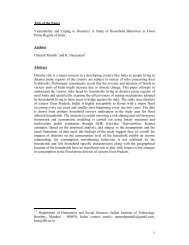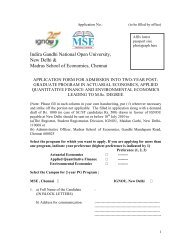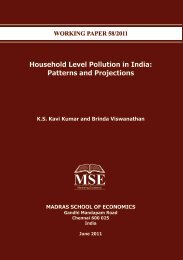Accounting for India's Forest Wealth - Madras School of Economics
Accounting for India's Forest Wealth - Madras School of Economics
Accounting for India's Forest Wealth - Madras School of Economics
- No tags were found...
Create successful ePaper yourself
Turn your PDF publications into a flip-book with our unique Google optimized e-Paper software.
With a reasonable change in the relative prices <strong>of</strong> labour andenvironmental resources, environmental tax re<strong>for</strong>m may significantlychange the incentives <strong>for</strong> innovation and technological development,inducing companies to devote more ef<strong>for</strong>t to increasing resourceproductivity, and less to increasing labour productivity. Industries thatreduce pollution, increase resource productivity and encourage a switchto renewable resources. These industries are collectively being called theenvironment industries (EI) which have two distinct components: thesupply <strong>of</strong> traditional pollution control technologies and services („end-<strong>of</strong>pipetreatment‟) and industries relating to resource management(management <strong>of</strong> materials and energy). Both components <strong>of</strong> the EI havecontributed to environmental improvement in the EU.How should Environmental Taxes and Environmental Subsidiesbe Combined?From Curbing Pollution to Promoting EnvironmentOne related question is how revenues from the environmental taxesshould be used. Should these become part <strong>of</strong> the general revenue pool <strong>of</strong>the government or should these be earmarked <strong>for</strong> environmentpromoting activities. By definition, if the environment tax is a cess itshould be earmarked <strong>for</strong> the sector or industry from where it has beenraised. Within that sector it needs to be allocated to promotingenvironment promoting technologies and processes. There are however anumber <strong>of</strong> taxes like taxes on petroleum products and electricity that,while raising revenues <strong>for</strong> the government, also serves to curb a pollutingactivity.3. INDIRECT TAX REFORM IN INDIATowards Taxing the Value-Added: From Central Excise toCENVATThe current generation <strong>of</strong> re<strong>for</strong>ms <strong>of</strong> indirect taxes leading the systemtowards a value added tax started with the introduction <strong>of</strong> MODVAT from8


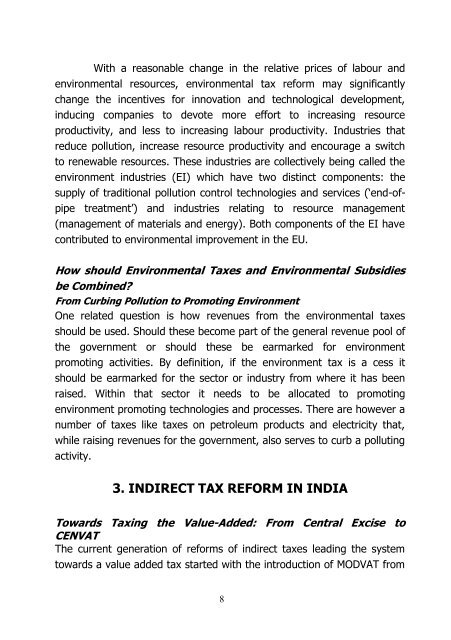
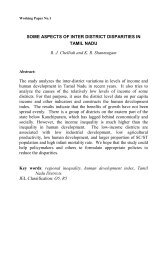

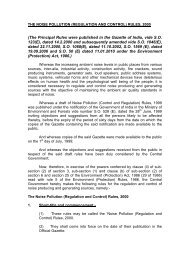
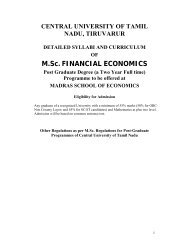
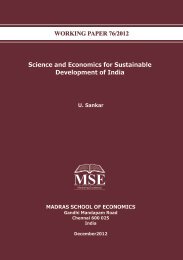
![Curriculum Vitae [pdf] - Madras School of Economics](https://img.yumpu.com/49878970/1/190x245/curriculum-vitae-pdf-madras-school-of-economics.jpg?quality=85)
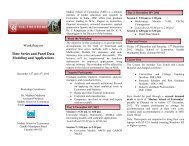
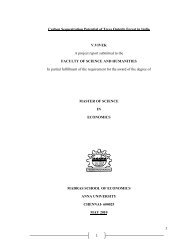
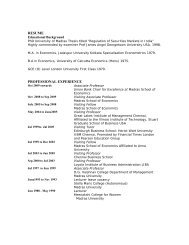
![Curriculum Vitae [pdf] - Madras School of Economics](https://img.yumpu.com/48715201/1/184x260/curriculum-vitae-pdf-madras-school-of-economics.jpg?quality=85)
